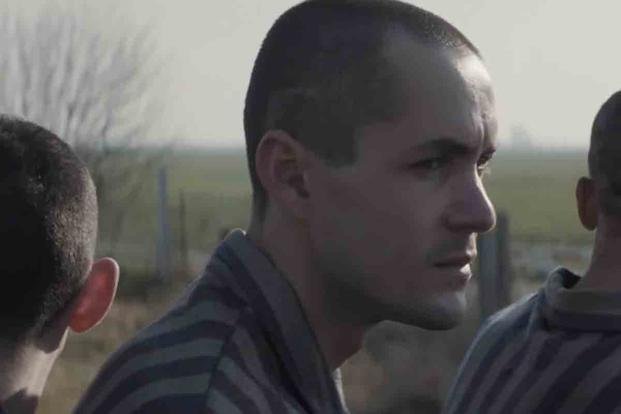Lale and Gita Sokolov found love in the most unlikely of places: the Nazi concentration camp Auschwitz-Birkenau. Lale was in a unique position for someone in a forced labor camp. As a polyglot who was trained to tattoo while suffering from typhus, the SS guards suddenly made him the camp's tattooist. His job was to brand every arriving prisoner with their unique serial number; if that number began to fade, he was to refresh it.
Gita's was a tattoo Lale was assigned to refresh. He fell in love with her instantly.
"The Tattooist of Auschwitz," a novel "based on real events" by Heather Morris, tells the story of Lale and Gita's love and survival in the death camp. Although it was hailed as "sobering and poignant" by many readers, some critics claimed her descriptions of the Holocaust failed to live up to the reality of what actually happened in the Nazi's sprawling extermination camps. Morris has also been criticized for fictionalizing aspects of the Sokolovs' love story.
An upcoming television adaptation might help make up for what the source material lacked when "The Tattooist of Auschwitz" premieres on Peacock as a six-part series on May 2, 2024.
Bown Ludwig Eisenberg, Lale Sokolov was a young Jewish man from Czechoslovakia who was sent to Auschwitz-Birkenau in 1942 by the government of what was then Nazi-dominated Slovakia. Just 26 years old, he was originally assigned to manual labor, but he contracted typhus and was cared for by the camp's tattooist, Pepan, who taught Lale how to tattoo.
Then one day Pepan disappeared. Because young Lale (portrayed onscreen by Jonah Hauer-King, "The Little Mermaid"), knew how to tattoo and because he spoke Slovakian, German, Russian, French, Hungarian and a bit of Polish, the SS made him the camp tattooist. He was suddenly part of the camp's administration, receiving extra rations and a room to himself. His job was to tattoo serial numbers on internees at Auschwitz, Birkenau and Monowitz. His own tattoo number was 32407.
In July 1942, Lale was assigned to tattoo an 18-year-old girl with the number 34902. He would later say, "as he tattooed her number on her left arm, she tattooed her number in his heart." The girl was named Gita Fuhrmannova (Anna Próchniak), and Lale would spend the rest of the war writing letters, arranging meetups and helping her survive the horrors of the camp.
With his access to extra food, he began smuggling food from outside Auschwitz to feed Gita and whomever else he could. When he struggled to keep going, Gita spurred him on, saying, "We must keep living, whatever it takes."
As the Red Army approached in 1945, Gita was sent away from Auschwitz and Lale was sent to the Mauthausen concentration camp in Austria. By luck, and with the aid of Czechs who knew he smuggled food into Auschwitz, he survived the war. Gita also survived, but both were nearly helpless to find each other.
Harvey Keitel ("Reservoir Dogs") plays the elderly Lale in the Peacock adaptation of "The Tattooist of Auschwitz," who is hesitant to share his story until after Gita's death in 2003. Despite his fears of being labeled a collaborator, he finally talks to New Zealand journalist Heather Morris (Melanie Lynskey, "Yellowjackets"), who writes the book about their love story.
Find out how the Sokolovs were reunited and how their love story played out when "The Tattooist of Auschwitz" starts streaming May 2, 2024, on Peacock.
Keep Up With the Best in Military Entertainment
Whether you're looking for news and entertainment, thinking of joining the military or keeping up with military life and benefits, Military.com has you covered. Subscribe to the Military.com newsletter to have military news, updates and resources delivered straight to your inbox.

















